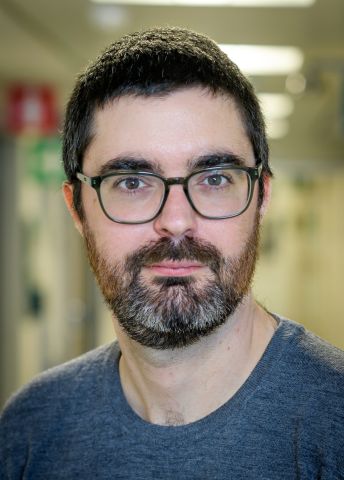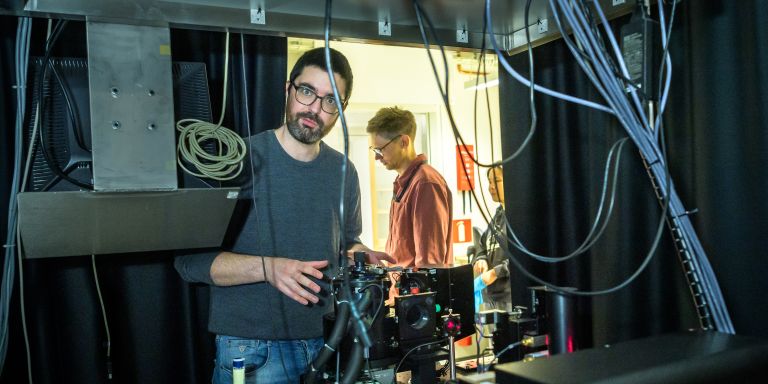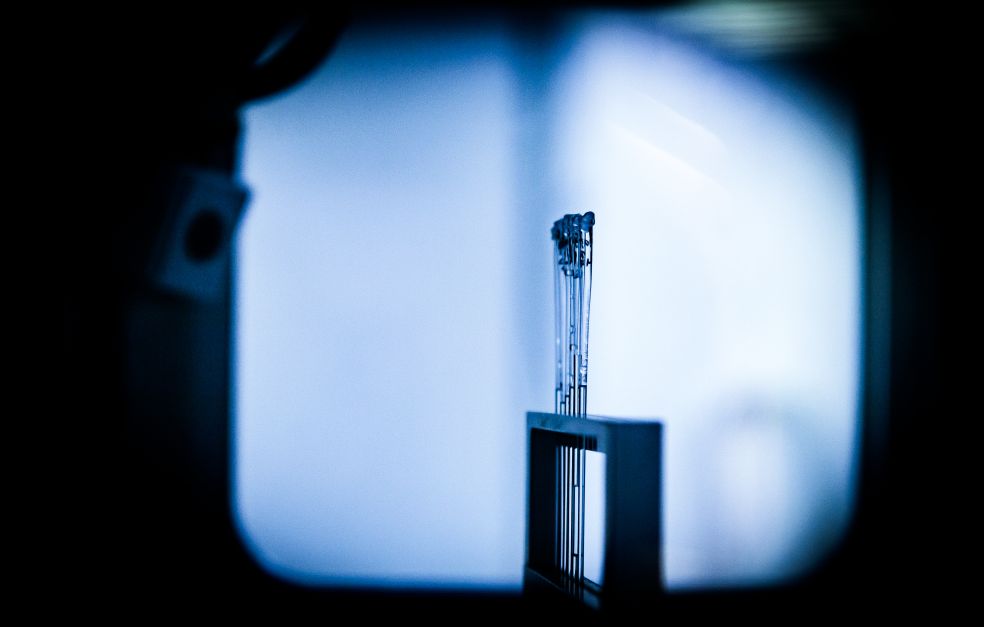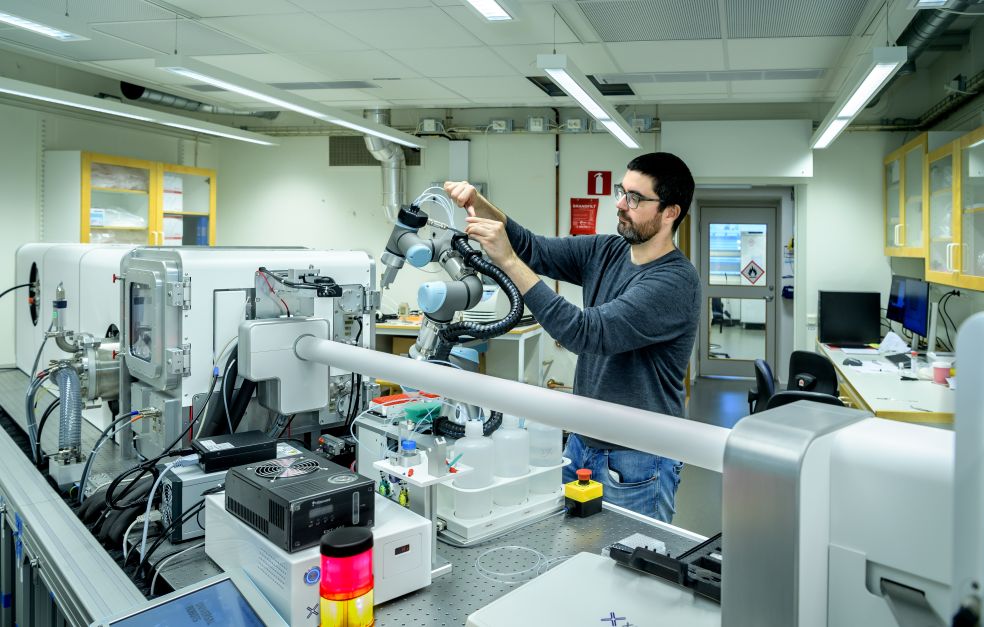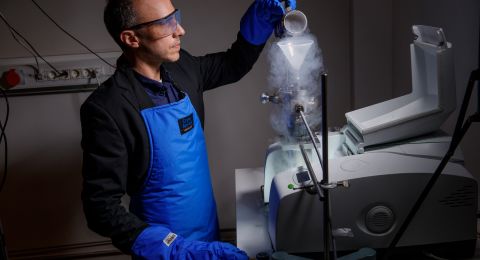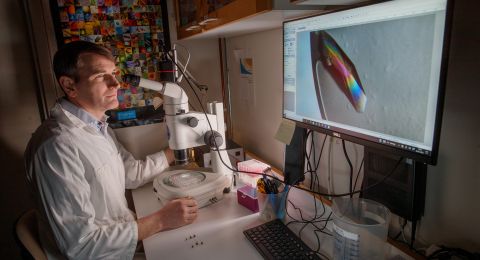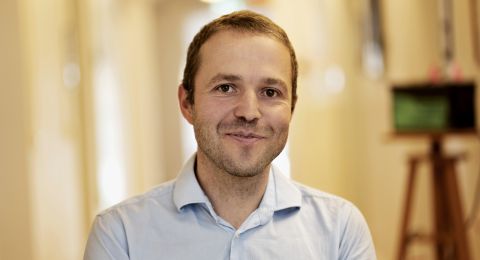The flow of complex fluids is impacted by velocity, pressure, and the softness of its particles. The last-mentioned factor is the one that has been least explored. Andrea Scotti wants to understand the effect of softness on the particle flow in both synthetic and natural complex fluids. This knowledge might pave the way for creating a synthetic form of blood.
Andrea Scotti
PhD, natural science
Wallenberg Academy Fellow 2023
Institution:
Lund University
Research field:
Experimental soft materials, focusing on the impact of soft components on the systems containing them
Blood shortages are a recurring problem in the healthcare sector, and artificial blood would be a huge asset. So far no one has managed to synthesize blood, and many challenges remain. One of them is that the blood must flow at exactly the right speed in order to absorb and release substances in the body.
Whereas non-complex fluids such as water always flow in the same way at a given temperature, the flow of complex fluids changes with factors such as velocity and pressure. Viscosity describes a fluid’s resistance to flow. Water has low viscosity, oil higher. We meet complex fluids with varying viscosity every day.
Research on viscosity has often been based on old model systems. New systems are needed to answer new questions.
“Mayonnaise, for example, may be quite solid when put on a slice of bread, but behave as a fluid when pressure is applied, and flows. In our bodies, our blood has one viscosity when it flows in a large vein, another in a narrow capillary,” says Scotti, researcher in physical chemistry and Wallenberg Academy Fellow at Lund University.
He says that although the viscosity of complex fluids has been fairly well studied, one important aspect has not been examined on any great scale: the effect of particles’ softness in the fluid.
“If a particle is soft, like a blood cell, so it can change shape in confined spaces, what is the individual effect of the particle on the properties of the system? That is what I’m trying to find out.”
One step at a time – from the simple to the complex
Commonplace systems are often highly complicated in purely physical terms. Scotti is addressing this by first breaking down the system’s properties into some key elements that are easier to explore, and then gradually increasing the complexity.
“I wanted to start with a soft particle that is not hard to create or find, whose properties I can easily control. I began with polymeric particles that swelled in water, like soft spheres. We fabricated samples in which we varied the concentration of the spheres, which impacted their shape. First we examined the effect at rest; now we’re going to study it in a flow.”
Scotti’s team is using an instrument called a rheometer, which measures viscosity. Additionally, the shape of the particles is measured on a nanometer scale, using a combination of X-rays, neutron and light scattering. The researchers are using a number of techniques, including small-angle neutron and X-ray scattering, and combining experimental results with computer simulations.
The aim is to see whether the particles shrink when they are in motion, aiding flow. Scotti’s interest in scattering techniques is one of the main reasons he is based in Lund, close to two major materials research facilities.
“It’s fantastic here. With the help of the MAX IV synchrotron light source facility and ESS, the European Spallation Source, that will soon provide neutrons, we can tackle these questions with unprecedented efficiency. It’s a real game changer, enabling us to perform even more complicated experiments.”
Getting closer to researching blood
When the researchers have ascertained the effect of the flow on the model soft spheres, they will be ready to move on from completely spherical particles to those that resemble red blood cells, which are crescent-shaped. Later on, Scotti will be collaborating with fellow researchers who can create synthetic particles of the right shape. He wants to try introducing hemoglobin and to implement the oxygen uptake into the particles, so they will be even more like real blood cells.
“I’ve been asked if this means we will have synthetic blood within five to ten years. It’s difficult to say. But we will definitely have a liquid that flows like blood, and possesses some of its properties.”
He thinks that artificial blood approved for transfusions is still a long way off, but to start with, synthetic blood could be used in research – to test new drugs, for instance.
Scotti grew up in the village of Pizzighettone near the Italian city of Cremona. Even as a child, he was interested in gaining a fundamental understanding of how the world works. When he enrolled at Parma University, physics was the natural choice. This was the kind of science he considered to be most fundamental and theoretical, and closest to philosophy, a subject he also really enjoyed.
When he was studying for his master’s he happened to come across neutron scattering techniques, which led him to study for a PhD at the ETH of Zürich. During this time he also spent one year as a visiting researcher at the Georgia Institute of Technology in the U.S., and later continued to a postdoc position at RWTH Aachen University in Germany. It was in Germany at a neutron scattering experiment that he met his wife, who is also a researcher. When she was offered a position at ESS, he accompanied her, first to Malmö University, then to Lund.
“I think the key to becoming a good researcher is to realize that you can’t know everything. But you can try to understand as much as possible, and turn to others for help in filling in the gaps. Exploring questions as I do every day is exactly what I want to be doing. I’ve never doubted that this is the right job for me.”
Text Lisa Kirsebom
Translation Maxwell Arding
Photo Kennet Ruona
